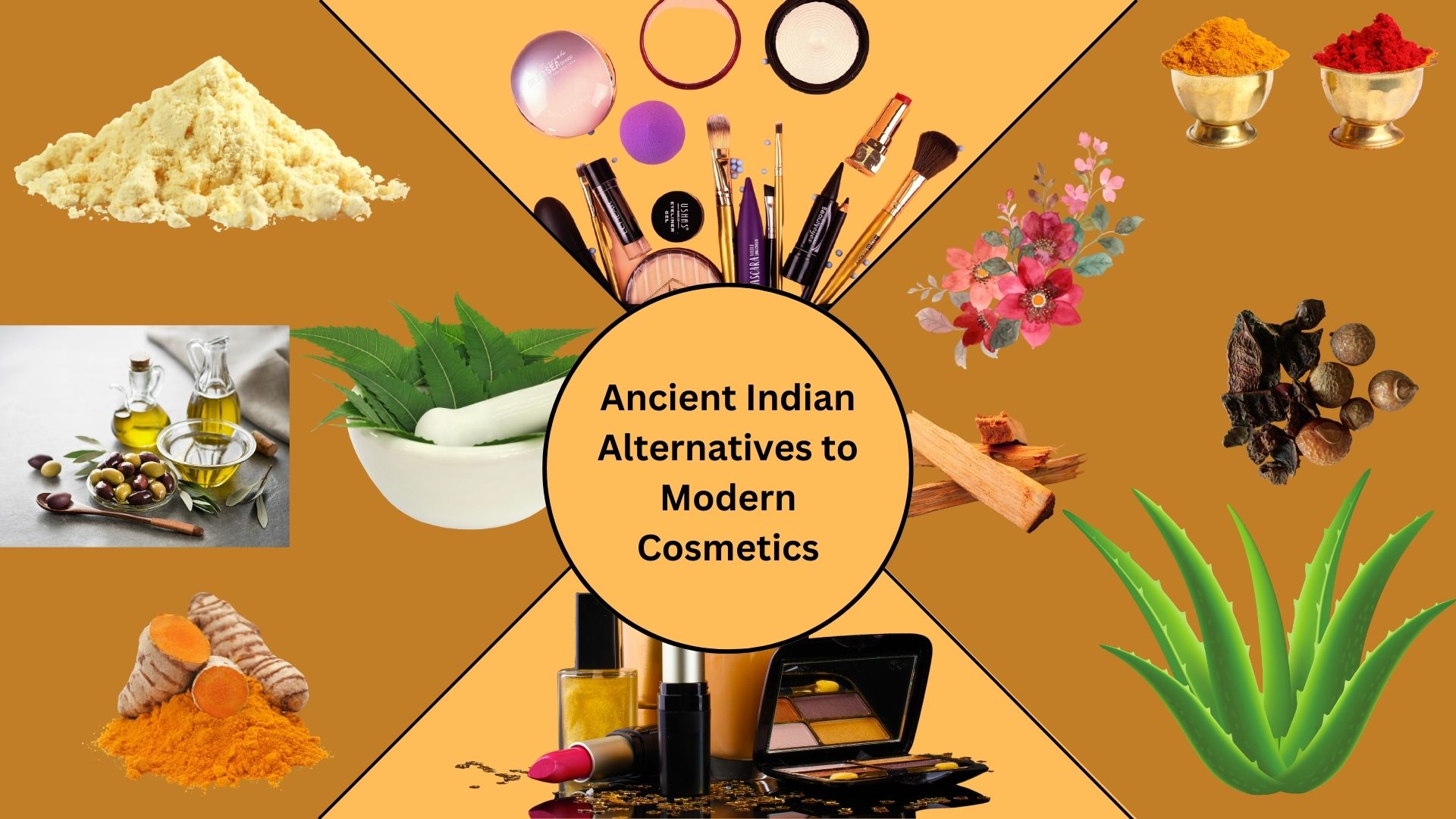
Ancient India boasts a rich heritage that extends beyond its vibrant history, encompassing a wealth of traditional practices, including beauty and skincare. Long before the advent of modern cosmetics, ancient Indians relied on natural remedies and ingredients to enhance their beauty. These alternatives, deeply rooted in Ayurveda and local traditions, offer a fascinating glimpse into the timeless pursuit of radiance and well-being.
1. Haldi (Turmeric):
Turmeric, or haldi, holds a significant place in ancient Indian beauty regimens. Renowned for its anti-inflammatory and antiseptic properties, it was commonly used to create face masks, helping to cleanse and brighten the skin. Turmeric's inclusion in beauty routines dates back centuries, illustrating the enduring wisdom of incorporating natural elements.
2. Chandan (Sandalwood):
Sandalwood, or chandan, has been revered for its aromatic and cooling properties. It was often ground into a paste and applied as a face mask. Beyond its refreshing scent, sandalwood is believed to soothe the skin, reduce blemishes, and impart a natural glow. The ancient practice of using sandalwood paste endures, with modern skincare enthusiasts embracing its timeless benefits.
3. Kumkum:
Kumkum, a red powder derived from turmeric and other natural ingredients, was traditionally used as a cosmetic by Indian women. Apart from its use in religious rituals, kumkum was applied in various patterns on the forehead, believed to enhance the feminine aura and symbolize auspiciousness. While modern makeup has evolved, the cultural significance of kumkum persists in certain ceremonies.
4. Besan (Gram Flour):
Besan, or gram flour, served as a versatile beauty ingredient. Mixed with various elements like yogurt, honey, or milk, it formed the basis of facial cleansers and exfoliants. The gentle exfoliating properties of besan helped remove dead skin cells, leaving the skin refreshed and vibrant—a practice that aligns with contemporary interest in natural exfoliation.
5. Neem:
Neem, with its potent antibacterial and antifungal qualities, found its way into ancient Indian beauty practices. Neem leaves were often ground into a paste or used in baths to address skin issues and promote overall skin health. The enduring popularity of neem in Ayurveda underscores its effectiveness in skincare routines.
6. Aloe Vera:
Aloe vera, prized for its soothing and moisturizing properties, was a staple in ancient Indian skincare. The gel extracted from its succulent leaves was applied to the skin to alleviate sunburns, moisturize, and address various skin concerns. This natural remedy continues to be a key ingredient in modern skincare products.
7. Shikakai:
Shikakai, derived from the Acacia concinna plant, has been an integral part of Indian hair care for centuries. Its natural cleansing properties made it a popular alternative to modern shampoos. Shikakai was often used to clean the scalp and hair, leaving it shiny and manageable. The gentle yet effective nature of Shikakai made it a preferred choice in traditional hair care routines.
8. Flowers:
The use of flowers in ancient Indian beauty practices extended beyond ornamental purposes to include their aromatic essence in personal care. Fragrant flowers such as jasmine, rose, and marigold were often incorporated into beauty routines, imparting a natural and delicate perfume to the skin and hair.
9. Oils:
Ancient Indian beauty rituals prominently featured the use of various oils extracted from plants and herbs. These oils served multifaceted purposes, addressing skincare, hair care, and overall well-being. Popular choices included coconut oil, sesame oil, and almond oil, each renowned for its unique benefits.
In conclusion, ancient Indian alternatives to modern cosmetics showcase a holistic approach to beauty, drawing from nature and emphasizing cultural significance. While modern cosmetics offer advanced formulations and a wider array of options, the enduring appeal of traditional practices lies in their simplicity, connection to cultural heritage, and alignment with the growing preference for natural and sustainable beauty solutions.
NEXT ARTICLE